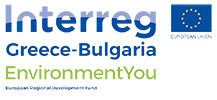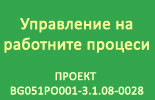European economic and political integration
|
Course title: |
European economic and political integration |
|
|
Course code: |
IFEPI |
|
|
ECTS: |
5 |
|
|
In-class hours |
Lectures: |
30 |
|
Laboratory work/Tutorials: |
30 |
|
|
Self-preparation hours |
Practical training: |
30 |
|
Other: |
35 |
|
|
Total hours: |
125 |
|
|
Language: |
English |
|
|
Study cycle: |
BSc, Master |
|
|
Semester: |
Winter, summer |
|
|
Faculty: |
Faculty of Economics |
|
|
Name of the lecturer(s): |
Assoc. Prof. Dimo Atanasov, PhD |
|
|
Mode of delivery: |
Face-to-face, distance learning |
|
|
Prerequisites: |
No prerequisites |
|
|
Learning outcomes of the course unit: |
Annotation: Over the past 200 years, the destiny of Europe has witnessed spectacular ups and downs. The Cold War, following the Second World War, divided Europe into two hostile camps, fighting unnecessary with each other. Europe's upheavals in the twentieth century however gave birth to a new vision; a vision that finally realized and became sensitive to the dangers of nationalism and overprotective economies strove to surpass national boundaries and thus sought to regain some of its lost prestige and strength. The shattering experience of two world wars that tore Europe apart gave birth to an ever closer union between the peoples of the European Community. Since the fall of the Berlin Wall and the end of the bipolar world, this relatively young institution has come to play a continuously greater role in world affairs. Consequently, it has undergone numerous important changes in a short period of time. Today the European Union is living through probably the most momentous period of its existence. Comprising 27 countries with a combined population of almost 500 million people, the European Union generates about one-third of the world’s economic output. The Eastern European countries constitute the bulk of the newest members of the European Union and are those that have faced the most dramatic challenges and changes. At the same time, they are the countries that offer the most interesting prospects for economic growth and opportunities. The EU today is a highly complex supra-governmental organization, with its own institutions and a complex policy-making system. Facing tremendous challenges brought about by the integration of a large number of new members, capitalizing on opportunities stemming from economic integration and being an emerging force in international politics, the European Union is a uniquely interesting topic for students of all majors. Students in this course will be able to acquire a broad perspective of the European Union and an excellent knowledge of its main institutions. The European socio-economic and business environment, as well as its international relations, have been fast-evolving, due to the deregulation of markets, changing consumer preferences, product innovations, and technological advancements. As the world becomes more integrated, a solid understanding of these issues and concepts and their associated implications has become essential for future development and decision-making on all levels. Course description This course provides an inter-disciplinary overview of the history, evolution and current challenges facing the European Union. It focuses on the economic and political rationale for closer integration, on the difficulties of reconciling sharply different cultural, legal and political traditions, on the stresses caused by immigration and enlargement, on the regional policy and on the recent challenges presented by the global economic and financial crisis. This course presents a systematic overview of the international business environment in Europe, including the political, economic and cultural influences on international trade and agriculture. Course Objectives Upon completion of the course, students should gain the ability to: 1. Understand the history, of the European Union (political and economic conditions). 2. Scrutinize the main institutions in EU and their role. 3. Reflect on the current challenges facing the EU: further enlargements, immigration, foreign policy, economic stagnation, world trade, climate change, GMO legislation, etc. 4. Develop a solid understanding of the Common Agricultural Policy, its role and objectives and its evolution in order to answer the challenges of European agriculture. 5. Understand the causes and consequences of the process of accelerated globalization and its impact on agriculture and rural regions. 6. Understand the impact of the 2008-2009 global economic crises on agriculture, trade and finance in the European countries. 7. Examine the strategies of the EU for sustainable development and competitiveness in the international arena. |
|
|
Course contents: |
Contents of the program: Topic 1 European history (from WWII until now) Topic 2 Evolution of European integration (from the Treaty of Paris to the EU Constitution) Topic 3 Enlargements of the EU (1973, 1981, 1986, 1995, 2004, 2007) Topic 4 Economic and Institutional requirements for EU membership Topic 5 European Institutions – role and functions Topic 6 European Parliament (Election process, Mandate, Functioning, MP’s) Topic 7 European Commission (Members, Mandate, Working Areas) Topic 8 Council of the European Union Topic 9 History and development of the Common Agricultural Policy (Establishment, Historical Reforms, The Mansholt Plan, MacSharry, Modern reforms) Topic 10 Objectives and Principles of CAP (Market unity, Community preferences, Financial solidarity) Topic 11 Sustainable Development of European economy, agriculture and rural regions Topic 12 Regional diversity and the Structural Policy of the EU (Overcoming development gaps between regions, Convergence Policy) Topic 13 European Structural Funds and the Cohesion Fund Topic 14 Economic development and competitiveness of EU Topic 15 The Lisbon strategy and future development policies Topic 16 European constitution (Signing and Ratification) |
|
|
Recommended or required reading: |
1. “The economist guide to the European Union” Dick Leonard, 2003; ISBN 954 – 8853 – 60 – 4 2. “European Integration” Emilya Georgieva, Kaloyan Simeonov, 2005; ISBN 954 – 80 – 22 – 62 – 1 4. http://europa.eu/about-eu/basic-information/index_en.htm 5. http://europa.eu/about-eu/institutions-bodies/index_en.htm 6. http://eur-lex.europa.eu/en/treaties/index.htm 7. http://www.europarl.europa.eu/news/public/default_en.htm 8. http://www.historiasiglo20.0rg/niza.htm 9. http://europa.eu/legislation_summaries/regional_policy/provisions_and_instruments |
|
|
Planned learning activities and teaching methods: |
Monological explanation (lecture, presentation) Dialogue methods(tutorials, conversation,discussion,brainstorming) |
|
|
Assessment methods and criteria: |
Written test |
|
 - Events on the occasion of the 80th anniversary of AU
- Events on the occasion of the 80th anniversary of AU











